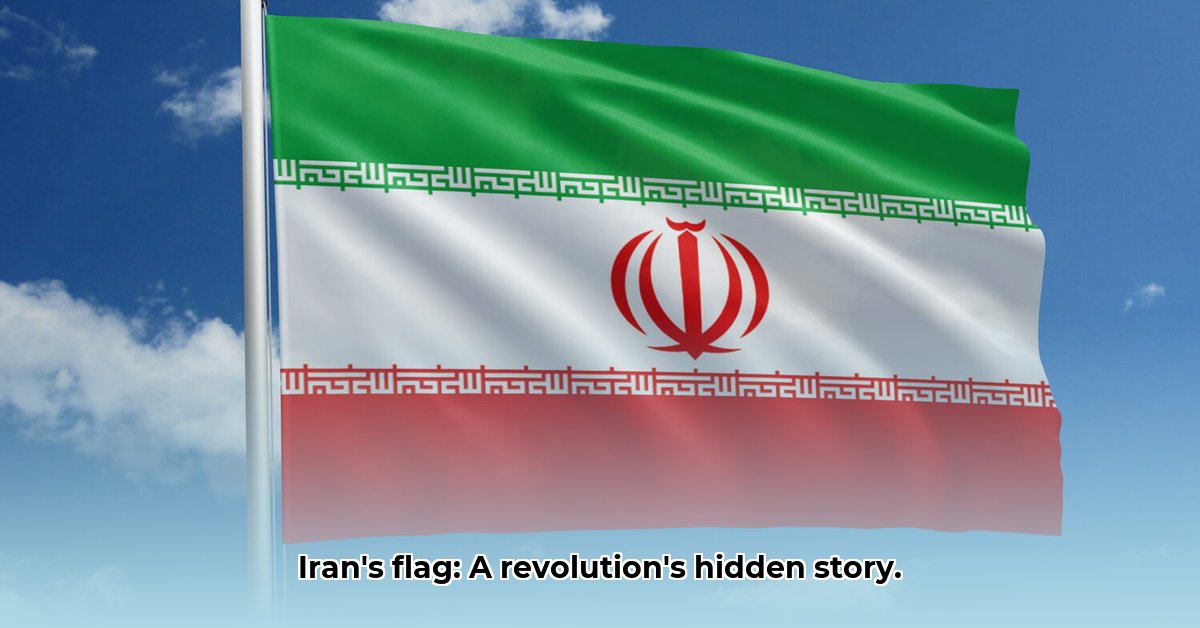
Vlag Iran: A Symbol Forged in Revolution
The vlag Iran (Iranian flag) is more than just a tricolour; it's a potent symbol reflecting the seismic shifts of the 1979 revolution. Its current green, white, and red design, adopted post-revolution, encapsulates the dramatic transformation of Iran. Understanding its significance necessitates a deep dive into the events that reshaped the nation. Keywords: Iranian Revolution, 1979 Revolution, Iranian flag, Ayatollah Khomeini, Shah of Iran, Islamic Republic, geopolitical implications, Middle East politics, Iranian history.
The Shah's Reign: Seeds of Discontent
Before 1979, Iran was ruled by the Shah, Mohammad Reza Pahlavi. While his reign brought economic progress for some, it also created vast socio-economic disparities. Many felt marginalized, experiencing increasing government repression. Furthermore, perceived foreign interference, particularly from Western powers, intensified anti-government sentiment. This potent cocktail of inequality, oppression, and foreign influence created a volatile atmosphere ripe for revolution. “The Shah's regime, while modernizing in some aspects, ultimately failed to address the deep-seated grievances of the Iranian people," notes Dr. Farideh Farhi, Professor of Political Science at the University of California, San Diego.
Ayatollah Khomeini: A Charismatic Leader
Enter Ayatollah Ruhollah Khomeini, a religious leader exiled for his opposition to the Shah. His powerful rhetoric, skillfully blending religious fervor with political critique, struck a chord with many Iranians. He expertly leveraged religious symbolism to unite diverse opposition groups under a shared banner of revolution. Khomeini's mobilizing capacity proved instrumental in galvanizing mass support against the Shah. How did such a potent combination of religious and political messaging manage to inspire such widespread upheaval? This question underlines the complex dynamics of the era.
A Complex Revolution: Unity and Fracture
The revolution wasn't a monolithic movement. Secular nationalists, leftists, and religious conservatives, each harbouring distinct visions for Iran's future, temporarily coalesced against the Shah. However, once their shared enemy was vanquished, their differing ideologies surfaced, triggering fierce power struggles and shaping the trajectory of the post-revolutionary era. This initial unity, soon to be fractured, is a reminder that revolutionary movements often comprise a multitude of often competing agendas.
The Islamic Republic: A Paradigm Shift
The Shah's downfall ushered in the Islamic Republic of Iran. Islamic law (Sharia) became the foundation of the legal system, bringing about profound societal and political changes. The new vlag Iran, incorporating the Islamic emblem, symbolized this abrupt shift. This transition marked a pivotal moment in Iranian history, altering the trajectory of the nation and its engagement with the world stage. The implementation of Sharia law irrevocably changed the socio-cultural fabric of Iran. This transformation continues to provoke debate and discussion within and outside Iran.
The Flag's Enduring Symbolism: A Nation's Identity in Flux
The vlag Iran serves as a powerful symbol of the revolution's enduring impact. Its colours and emblems are imbued with layers of meaning, evoking diverse interpretations. Some see it as a representation of national pride and religious unity, while others consider it a reminder of the revolution's complexities and its lasting consequences. This diversity of interpretations highlights the multifaceted legacy of the 1979 revolution. The symbolism remains contested, underscoring the ongoing negotiation of Iranian national identity.
Foreign Intervention: A Catalyst for Change?
The 1979 Iranian Revolution wasn't merely an internal affair; it was profoundly shaped by international dynamics. To fully grasp its genesis, we must examine foreign involvement.
The Shah's Western Alliances: A Consequence of Support?
The Shah's close relationship with Western powers, particularly the United States, provided substantial military and economic support. However, this patronage inadvertently fueled resentment amongst many Iranians who viewed it as bolstering a repressive regime. This perception contributed to the growing anti-government sentiment, transforming support into a potent catalyst for the revolution. This illustrates the unintended consequences of foreign policy, highlighting the need for nuance when dealing with foreign assistance to regimes experiencing internal strife.
Cold War Dynamics: A Proxy Battleground
The Cold War further destabilized Iran. Both the US and the USSR sought to influence the country, indirectly fuelling instability and accelerating the revolutionary process. This proxy conflict, though indirect, played a significant role in shaping the revolutionary landscape. The Cold War's influence on the Iranian Revolution is a testament to the far-reaching consequences of global geopolitical rivalries.
The Oil Factor: A Global Commodity in the Crucible
Iran's oil wealth made it a crucial player in global energy politics. The perceived exploitation of this resource further inflamed nationalist sentiments and exacerbated the anti-Shah movement. Control over Iran's oil reserves was a key factor in the complex calculations of both domestic and foreign actors. The influence of the oil industry on the revolution should not be underestimated.
Exiled Opposition & Foreign Support
Numerous Iranian opposition groups, operating from exile, received support from various foreign actors. These groups, with varying political goals, contributed significantly to the anti-Shah movement's organization and mobilization. The role of these groups demonstrates the importance of transnational networks in fueling revolutionary change.
A Transformed Geopolitical Landscape
The 1979 revolution profoundly reshaped the Middle East's geopolitical landscape. The Shah's overthrow created a power vacuum, with the subsequent rise of the Islamic Republic instigating significant changes in regional and global politics. The fallout from the revolution continues to shape the Middle East’s political dynamics. The revolution’s impact underscores that the consequences of such a significant event extend far beyond the impacted country’s borders.